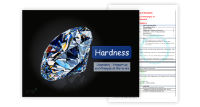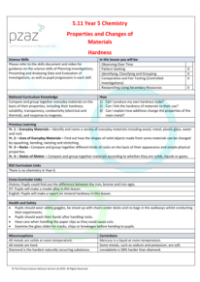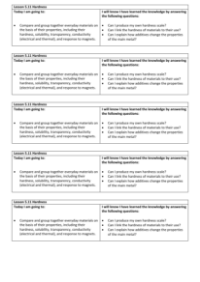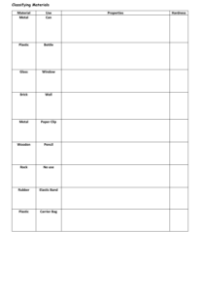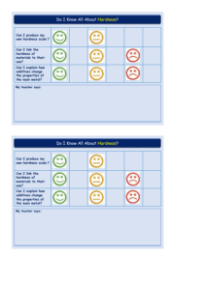Hardness - Teacher Explanation

Science Resource Description
Welcome to Lesson 5.11 on Hardness, a part of the Year 5 curriculum focusing on the Properties and Changes of Materials. This lesson aligns with the National Curriculum's requirement for pupils to compare and group everyday materials based on various properties, such as hardness, solubility, transparency, conductivity (both electrical and thermal), and their response to magnets. To ensure safety during practical activities, pupils are instructed to wear safety goggles, tuck chairs under desks, tie back long hair, and keep walkways clear of bags. After practical work, thorough handwashing is essential, and any glass slides used must be checked for damage before distribution. The lesson offers cross-curricular opportunities, including research into the hardness of historical tools, creating model alloys in Design and Technology, and writing explanations of material hardness in English.
During the lesson, students will investigate the Mohs scale, a tool used by geologists to rate mineral hardness, which ranges from 1 (talc) to 10 (diamond), and they may discover materials such as Lonsdaleite that surpass diamond in hardness. Pupils will conduct research and present their findings, possibly in the form of a table. They will also examine the physical properties of various items, such as glass, plastic, rock, wood, and metal, and develop their own hardness scale based on their observations. The lesson continues with an activity where students rank the hardness of different materials, including a fingernail, a glass slide, a paper clip, and coins, through scratch tests. Additionally, they will explore alloys, learning about their composition and properties, and simulate alloy creation using plasticine and various additives to observe changes in properties. This hands-on approach aims to deepen their understanding of material science and the practical applications of different materials and alloys.
